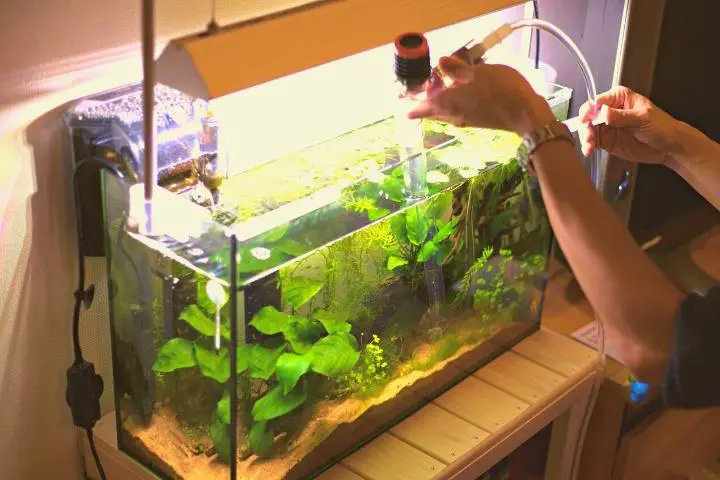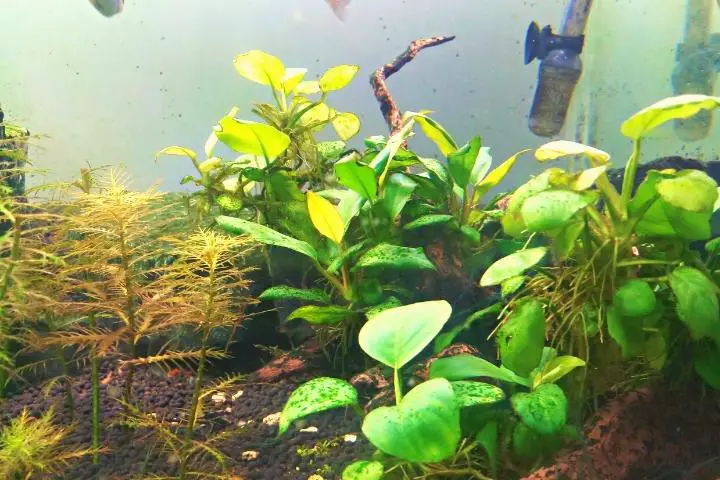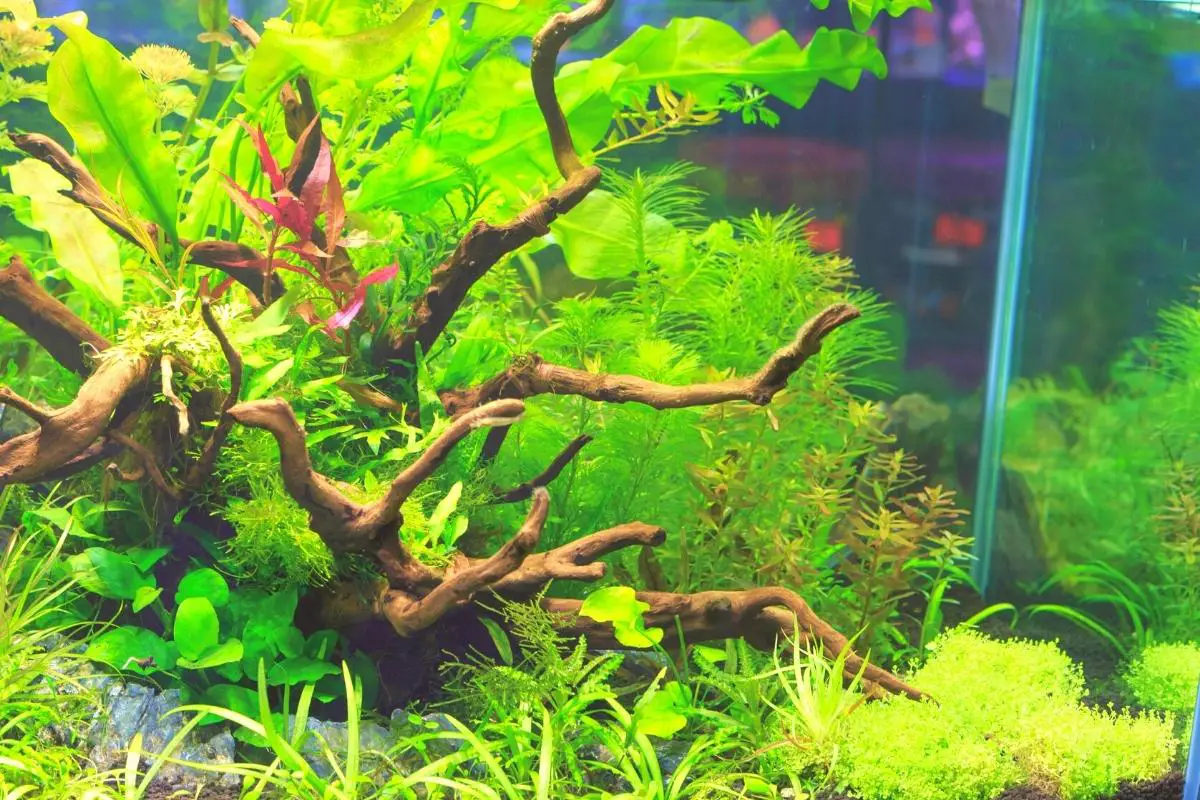How to Plant Aquarium Plants in Sand | Hint: It Depends on the Plant!
Rocks and decor can make the average fish tank come to life. But nothing compares to the beauty and intrigue of living aquatic plants!
The ability to survive underwater is the only real difference between aquatic plants and those living in your garden. If you want your aquarium plants to be healthy and happy in their new home, you’ll need to create a supportive environment.
Planting aquatic plants in aquarium sand is extremely easy! However, each type of plant calls for a specific technique.
Will Plants Grow in an Aquarium?
Yes! But you will need to provide a few critical resources for them to survive and thrive:
Substrate
Aquarium plants grow well in sand or fine gravel. A layer of 2 to 3 inches along the bottom of the tank is sufficient for most aquatic plants.
Nearly all sand sold for aquariums is appropriate for planting, although some types of sand are advertised specifically for this purpose. Many aquarists — a fancy term for aquarium keepers — opt to fill their tanks with sterilized play sand as well.
You do not need “regular” dirt to grow live plants in an aquarium. In fact, dirt containing organic matter (like potting soil or dirt taken from your garden) is harmful to aquariums and the fish inside them.
Nutrition

Plants don’t actually get nutrition from the substrate itself. So sand or gravel must be supplemented with an aquarium-safe fertilizer or, if appropriate, aquatic compost.
With time, some aquarium gardens become self-sufficient. The plants feed off of the naturally occurring fish waste — no additional fertilizer is needed. But the vast majority of aquariums will require routine feedings to meet all of the plants’ needs.
Light
All living plants need sunlight to survive. (Underwater plants photosynthesize just like their surface-dwelling brethren!)
Since placing an aquarium in direct sunlight is a terrible idea, you’ll need to turn to artificial solutions. Fortunately, there are plenty of great lighting options available for all budgets and tank sizes.
Best Plants for Aquarium Sand and How to Plant Them
Most hobbyists divide aquatic plants into categories based on their growth habits. This makes it super easy to determine the best strategy for planting the most popular varieties!
If you’re not sure which category a particular plant falls under, your local aquarium store is likely to know.
Stem Plants
In aquarium lingo, stem plants are those that grow straight out of the substrate from a single cluster of roots. Popular varieties include water wisteria, ludwigia, and bacopa.
These aquatic plants are incredibly easy to plant at the bottom of a fish tank. Just submerge the root cluster into the substrate as far as possible (it’s okay if the bottom leaves are covered). A pair of long tweezers will make this process even easier.
Rosette Plants

The easiest way to identify these aquatic plants is by looking at the point where the leaves emerge. If the leaves form a circle around a central growing point — this pattern is often compared to the petals of a rose — it is a rosette.
Rosette plants are also quite easy to plant in an aquarium but with one caveat. You need to be sure not to place the base (a.k.a. crown) of the plant beneath the substrate. Only the roots should be covered by sand.
Bulb Plants
Common aquarium plants with bulbs include tiger lotus, aquarium lilies, and aponogetons.
Note that the bulb of these plants is not a root and should not be buried in the sand. Instead, planting these varieties is as simple as gently laying the bulb on the substrate’s surface.
Some bulbs contain gasses and will float when first placed in the water. While you can weigh them down with aquarium decor, it’s also fine to just leave them in the tank until they sink on their own.
Rhizome Plants
Rhizome plants are very similar to bulb plants. Except, instead of a roundish bulb, these plants grow roots and stems from a long, horizontal rhizome.
The planting process is also almost identical to that of aquatic bulbs! Place the rhizome on top of the substrate and cover any roots with sand. The rhizome itself should be above the sand, though!
Grass Plants
Grass-like plants, like dwarf sagittaria and dwarf hairgrass, can be planted by gently covering the roots with sand. Be careful not to bury the base of the plants’ leaves. Only the roots should be under the substrate.
Since these types of aquatic plants tend to grow rapidly, it’s a good idea to space them out when planting. You can even break up clumps of grassy plants into smaller pieces before planting.

Ground Cover Plants
There are many types of ground cover plants you can place in an aquarium. Some popular examples include Java moss and water clover.
Most of these plants can be attached to a large rock, piece of decor, or simply placed on top of the tank’s substrate layer. You’ll often find ground cover plants sold with the root system already attached to a piece of mesh or plastic. This makes it even easier to secure the plant to its intended location.
Frequently Asked Questions
Can You Plant Aquarium Plants Still in Their Pots?
Maybe — it all depends on the type of plant and how you plan to use it!
Some aquatic plants will quickly outgrow their original pots. Keeping these plants contained will only stress the root system and could even interfere with long-term health.
On the other hand, planting aquatic plants in pots can make rearranging and cleaning your aquarium much, much easier! Just be sure to choose a large enough container. (This usually means upgrading from the pot the plant was sold in.)
Note that some aquarists prefer to remove the rock wool — the substrate many aquatic plants are grown in — from plant roots before adding them to their tanks.
Is Colored Sand Safe for Aquarium Plants?
Yes, colored sand that is advertised as safe for aquariums is also safe for aquatic plants. Always avoid using dyed sand or gravel that is not labeled as safe for fish.
How Do You Keep Aquarium Plants From Floating?
Ideally, your aquatic plants’ roots should hold them in place. If you’re waiting for sturdier roots to grow in or have resident fish who enjoy digging in the sand, use plant weights to help keep everything in its place.






